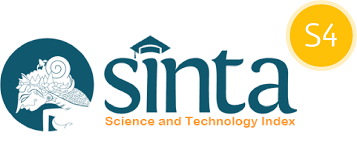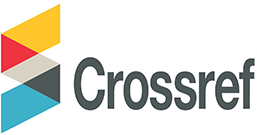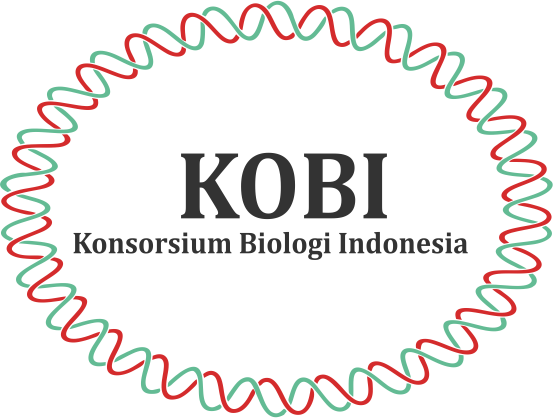Identification of Pollen Characteristics as Apis cerana Feed Sources in Honeycomb, in Serang Purbalingga
Abstract
Serang Purbalingga village is a fertile area and has the potential for the development of Apis cerana honeybee business. Honeybee products are known to have high economic value. The development of honeybee business will be better if supported by the avaibility of pollen from flowering plants as feed sources. Pollen that use to be A. cerana feed sources are taken from plants flower around the beehive and matched with pollen inside honeycomb. The purpose of this research is to determine the diversity and character of pollen from plants found around beehive and inside A. cerana honeycomb. This research conducted by descriptive survey method where the data obtained from field used as material for analysis and describing the characteristics of pollen found. Variable in this research is pollen characters with parameters are pollen units, size, shape, apertures and ornamentation. Based on results, there are 23 species of plants included in 17 families found around the beehive with varying of pollen shape, namely spheroidal, prolate-spheroidal, sub-prolate, and prolate. The smallest to largest pollen sizes are minutae, mediae, and magnae. Types of pollen ornamentations are rugulate, reticulate, echinate, psilate, scabrate, to baculate. Pollen apertures are varies monosulcate, monoporate, tricolporate, tricolpate, tetracolpate, hexacolpate to syncolpate. Pollen characters inside honeycomb are identical to 12 pollen of plant species found around the beehive where the pollen shape are spheroidal, prolate-spheroidal, sub-prolate and prolate. There are several types of ornamentation, namely reticulate, rugulate, echinate, psilate and sacbratte. Apertures are varies from monosulcate, monoporate, tricolporate, tricolpate to syncolpate.
Key words : Apis cerana, characters,diversity, pollen, Purbalingga
References
Avila, R. S. d., Oleques , S. S., Marciniak, B. & Ribeiro, J. R. I. 2017. Effects of Model-Mimic Frequency on Insect Visitation and Plant Reproduction in A Self-Mimicry Pollination System. AoB Plants: 1 - 12.
Cantino, P. D. & Senders, R. W., 1986. Sub-familial Classification of Labiatae. Syst Bot , 11: 163-85.
Erdtman, G. 1943. An Introduction To Pollen Analysis. Waltham: Chronica Botanica Company.
Faegri, K. & Iversen , J. 1989. Textbook Of Pollen Analysis. Chichester: John Willey and Son.
Faheem, M., Aslam, M. & Razaq, M. 2004. Pollination Ecology With Special Reference to Insects A Review. J. Res. Sci., 15: 395 - 409.
Farland, D. 1985. Animal Behaviour. England: University of Oxford.
Hesse, M., Halbritter, H., Weber, M., Buchner, R., Frosch-Radivo, A., Ulrich, S., Zetter, R. 2009. Pollen Terminology: An Illustrated Book. NewYork: Springer Wien.
Kapp, R. O. 1969. How to Know Pollen and Spores. Dubuque, Iowa: WMC Brown Company Publisher.
Keller, I., Fluri, P., & Imdorf, A. 2005. Pollen nutrition and colony development in honey bees: part 1. Bee world, 86(1): 3-10.
Kementerian Pertanian. 2017. Deskripsi dan Visualisasi Jenis Asing Invasif (JAI)/Invasif Alien Spesies (IAS)
Kelompok Tumbuhan dan Organisme yang Berasosiasi dengan Tumbuhan. Jakarta: Badan Karantina Pertanian
Mahr, S., 2017. Spider flower, Cleome hassleriana. Diakses dari: https://wimastergardener.org/article/spider-flower-cleome-hassleriana/ pada tanggal 20 Agustus 2019
McCall, C. & Primack, R. L. 1992. Influence of Flower Characteristics, Weather, Time of Day, and Season on Insect Visitation Rates in Three Plants Communities. American Journal of Botany, 79: 434-442.
Miyajima, D. 1995. Causes of Low Double-flowered Seed Production in Breeding Zinnia. J. AMER. SOC. HORT. SCI., 120(5): 759-764.
Moore, P. D. & Webb, J. A. 1978. An Illustrated Guide to Pollen Analysis. London: Hodder Arnold H&S.
Mulyono, Susdiyanti, T. & Supriono, B. 2014. Kajian Ketersediaan Pakan Lebah Madu Lokal. Jurnal Nusa Sylfa, 2(15): 18 - 12.
Pratama, I. P. N. E., Watiningsih, N. L. & Ginantara, I. K. 2015. Perbedaan Ketinggian Tempat Terhadap Jenis Polen yang Dikoleksi oleh Lebah Trigona. Jurnal Biologi, 1(22): 42 - 48.
Saepudin, R. 2013. Analisis Keberlanjutan Model Integrasi Lebah dengan Kebun Kopi (Sinkolema) Dalam Rangka Peningkatan Produksi Madu dan Biji Kopi. Jurnal sains peternakan Indonesia, 1(8): 1 - 13.
Sarwono. 2001. Kiat Mengatasi Permasalahan Praktis Lebah Madu. Jakarta: Agromedia.
Stanley, J., Sah, K., Subbana A. R., Preetha, G., & Gupta, J. 2017. How Efficient is Apis cerana (Hymenoptera: Apidae) in Pollinating Cabbage, Brassica oleracea var. capitata? Pollination Behavior, Pollinator Effectiveness, Pollinator Requirement, and Impact of Pollination. Journal of Economic Entomology, : 1–9.
Wibowo, P. E., Syafrizal & Susanto , D. 2016. Jenis Tumbuha Sumber Nektar Lebah Apis dorsata Fabr. dari Desa Bumi Harapan dan Desa Bukit Raya Kecamatan Sepaku Kalimantan Timur. Bioprospek, 1(11): 54 - 64.














_copy.png)



